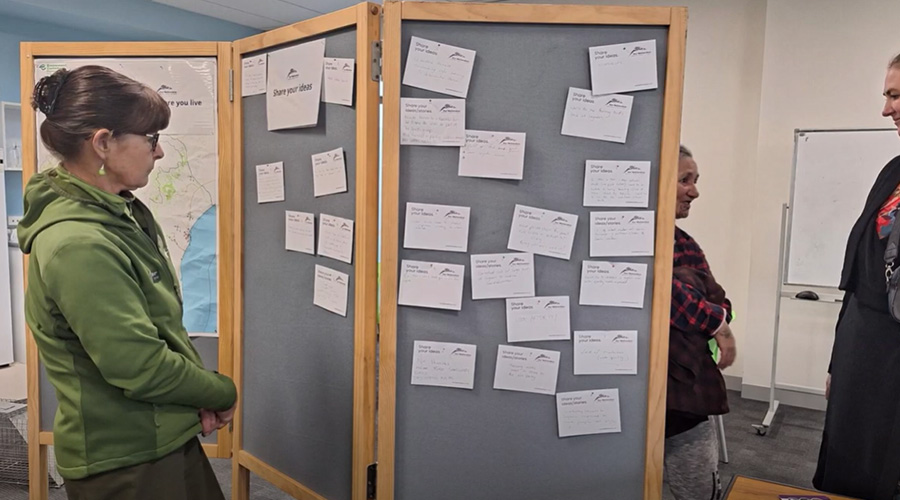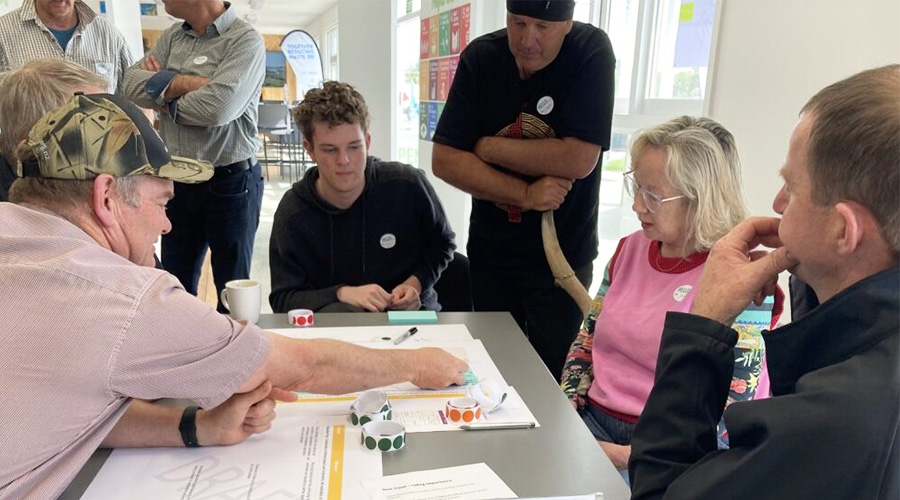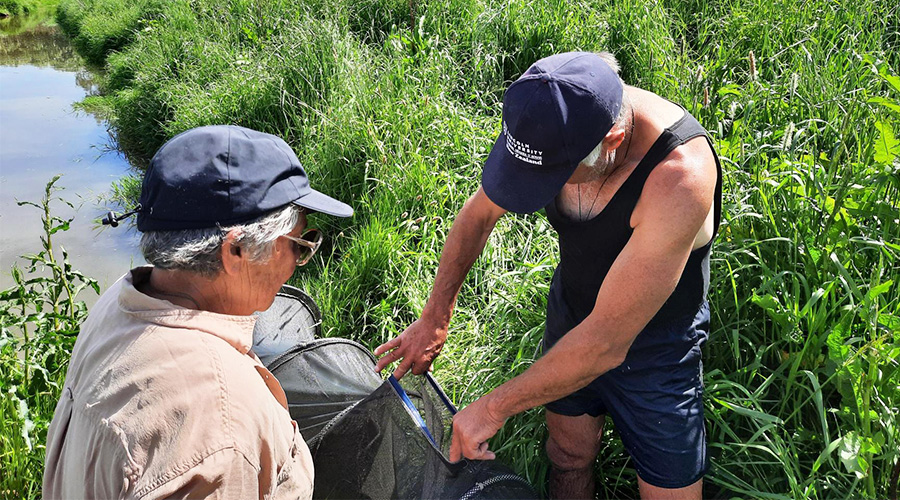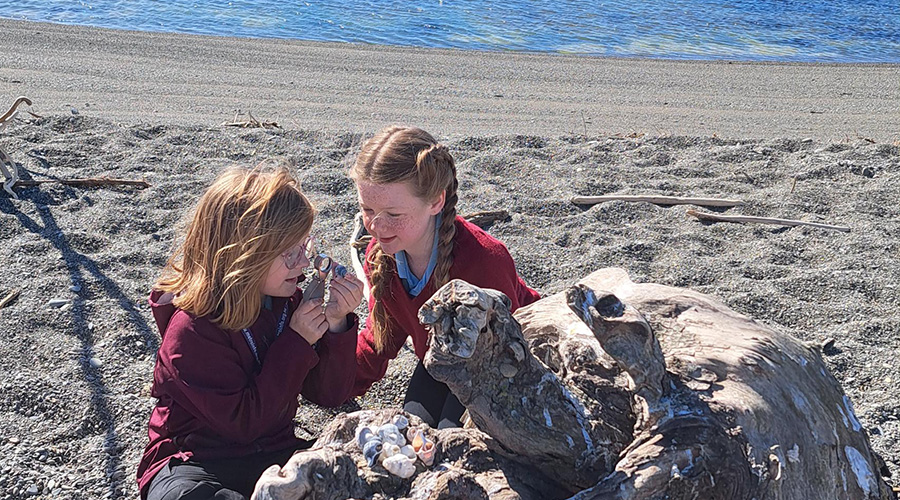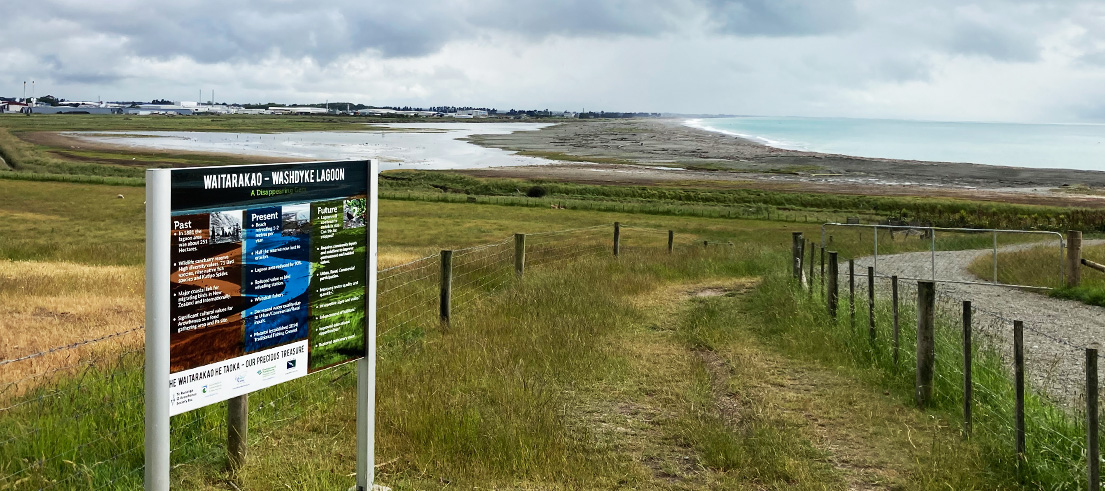
Our Waitarakao – workshops complete busy year
A project to improve the health of the Waitarakao Washdyke Lagoon catchment has continued to attract keen interest from the Timaru community, with a recent series of workshops completing the key activities for 2023.
Our Waitarakao – the joint project to create a strategy to improve the mauri (life force) of the catchment for everyone – held a series of focused workshops over the spring months, which followed wider public engagement with the community earlier this year.
Three community workshops drew on the lived experience, knowledge and views of people from the community, with diverse backgrounds in industry, te Ao Māori, business, farming, education, transport, disability support, conservation and science. The groups worked together to discuss proposed objectives for the strategy and how they could be measured and implemented over time.
Community knowledge essential
Our Waitarakao project lead and senior natural hazards scientist Chris Fauth said members of the workshop have provided valuable information to consider.
"Having the community's involvement is essential for creating a shared vision and a successful outcome for the lagoon and its catchment.
"We were highly impressed with the participants’ willingness to share ideas and their own personal, cultural, and business perspectives – everything from practical ideas on how we can engage with school children, through to input on appropriate restoration timeframes," he said.
"The subject matter for this project can be complex – including the impacts of natural hazards, human activity and climate change on ecology, mahika kai, flood defences and water flow – but the workshop members were fully engaged and have made a great contribution to the project."
The information and feedback from the workshops will now be considered by the project team, with input from the Working Group and Steering Group – made up of key staff and representatives from partner organisations.
A draft strategy for the lagoon and catchment will then be created, and shared with the community for feedback in 2024.
Improving the catchment environment
Meanwhile, there are initiatives already underway or being planned to help improve the catchment environment - including native riparian plantings, ongoing predator trapping, educational visits, bird surveys, water quality monitoring, and upcoming beach clean ups. You can check out the Our Waitarakao website or Facebook page for more details. Here are just a few examples of what’s been happening.
Fish survey across the catchment
Our science team is conducting a catchment-wide survey to investigate the distribution of fish in the streams and lagoon of Waitarakao. This survey includes e-DNA sampling as well as the more common fish survey methods such as netting and trapping (pictured).
The key objective of this survey is to gather a comprehensive understanding of fish communities and their habitats in the Waitarakao Lagoon system and its upstream catchments.
The team has worked closely with landowners to get access to survey sites and share information about the work underway.
Predator trapping
A team of volunteers continues to work with the Department of Conservation to control predators within the lagoon area and wider catchment to get rid of the pests that prey on birdlife in the area. The team regularly sets and maintains a trapline through the wildlife sanctuary to eliminate mustelids and rats.
If you’d like to get involved or buy a trap for your own backyard, get in touch with Predator Free Timaru.
Learning about the lagoon
Tamariki in the South Canterbury area are continuing to visit Waitarakao Lagoon to learn about its special place within the wider ecosystem and our community.
In November, St Joseph’s School Timaru students took part in a series of lessons, as well as a field trip to the lagoon.
They learnt about pest mammals causing problems in the area, stormwater and its impacts on the environment, and origins of rubbish they collected on the beach.
Planting native species
The lagoon ecosystem benefited from 1,300 new natives planted by teams from McCain Foods NZ and Te Kete Tipuranga O Huirapa Ltd (a division of Arowhenua Native Nursery) in November.
Thanks to Climate Change Resilience funding from central government, these plants will help create spawning habitat for inanga and contribute to flood protection and improved biodiversity values for the lagoon.

